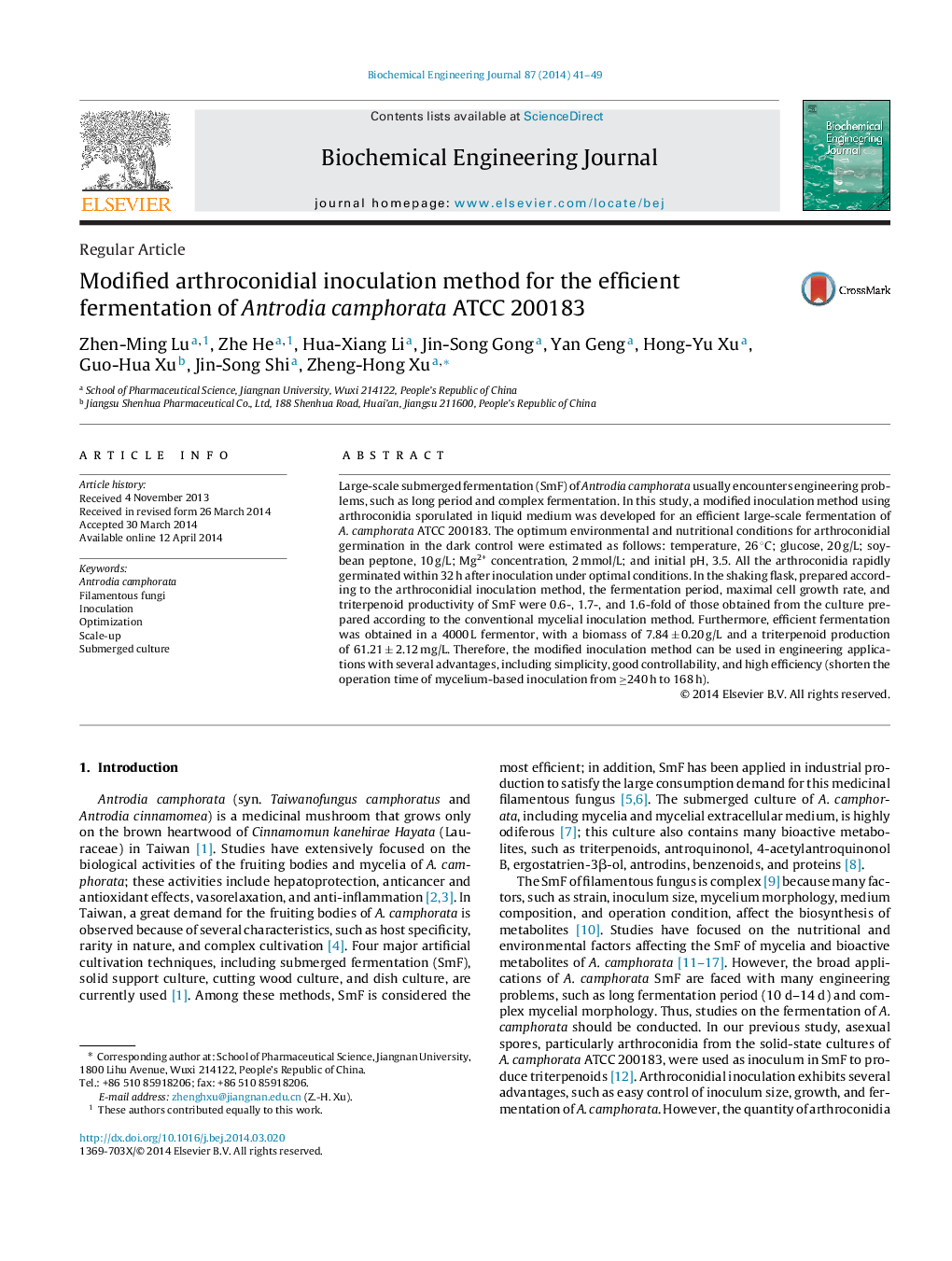| Article ID | Journal | Published Year | Pages | File Type |
|---|---|---|---|---|
| 3206 | Biochemical Engineering Journal | 2014 | 9 Pages |
•A. camphorata arthroconidia produced in submerged culture were used as inoculum.•Environmental and nutritional factors for arthroconidia germination were studied.•The modified arthroconidium-based inoculation is time and labor saving.
Large-scale submerged fermentation (SmF) of Antrodia camphorata usually encounters engineering problems, such as long period and complex fermentation. In this study, a modified inoculation method using arthroconidia sporulated in liquid medium was developed for an efficient large-scale fermentation of A. camphorata ATCC 200183. The optimum environmental and nutritional conditions for arthroconidial germination in the dark control were estimated as follows: temperature, 26 °C; glucose, 20 g/L; soybean peptone, 10 g/L; Mg2+ concentration, 2 mmol/L; and initial pH, 3.5. All the arthroconidia rapidly germinated within 32 h after inoculation under optimal conditions. In the shaking flask, prepared according to the arthroconidial inoculation method, the fermentation period, maximal cell growth rate, and triterpenoid productivity of SmF were 0.6-, 1.7-, and 1.6-fold of those obtained from the culture prepared according to the conventional mycelial inoculation method. Furthermore, efficient fermentation was obtained in a 4000 L fermentor, with a biomass of 7.84 ± 0.20 g/L and a triterpenoid production of 61.21 ± 2.12 mg/L. Therefore, the modified inoculation method can be used in engineering applications with several advantages, including simplicity, good controllability, and high efficiency (shorten the operation time of mycelium-based inoculation from ≥240 h to 168 h).
